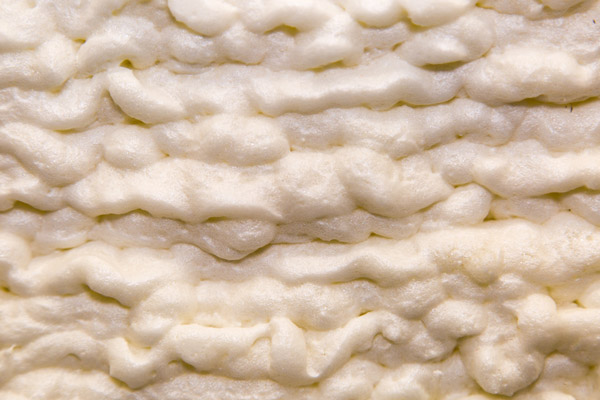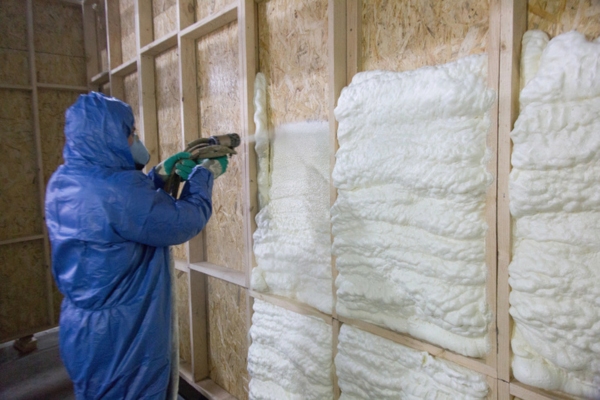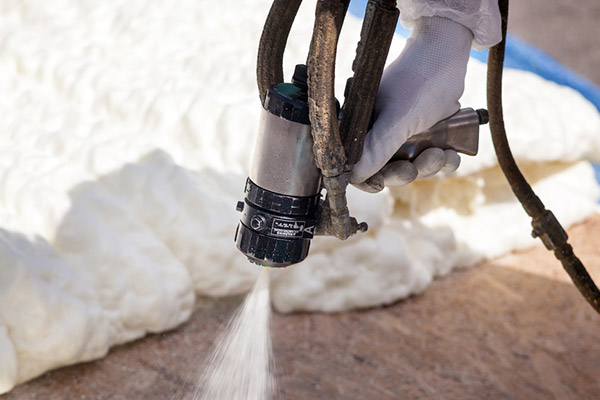The Problems With Using A Spray Foam Insulation Kit In Fort Collins

A spray foam insulation kit promises cheap and easy installation. However, the truth is that the expectation is different from reality. Homeowners often realize too late how hard insulation installation can be.
Using a DIY spray foam insulation kit can be tricky without prior experience and in-depth knowledge about the spray foam material. They might end up making a mess and regretting the decision. Some materials are just not suited for DIY projects. Read on to learn why spray foam insulation is best left to professional installers like Ascend Construction.
Why It’s Important to Work with Insulation Professionals
Contents
- Why It’s Important to Work with Insulation Professionals
- Common Issues with DIY Installation of Spray Foam
- Environmental Impact of Spray Foam Insulation
- FAQs About Spray Foam Insulation in Fort Collins
- What Are the Different Types of Spray Foam Insulation?
- How Does Spray Foam Compare to Other Insulation Materials?
- Can Spray Foam Insulation Help with Moisture Control?
- How Long Does Spray Foam Insulation Last?
- Is Spray Foam Insulation Safe for Homes with Electrical Wiring?
- How Does Temperature Affect Spray Foam Insulation Performance?
- Conclusion
- Contact Ascend Construction for Expert Insulation Services in Fort Collins, Colorado
Proper Insulating Material Selection
Professionals went through structured training to become experts in insulation. They know everything about each material, including their strengths and weaknesses. They can provide guidance as to what suits the intended application. It could be spray foam or something else. If you are set on using a certain insulating material, then they could help you find high-quality foam options that fit your budget.
Safe Handling Of Insulation

Spray foam is great for regions that require a high R-value, but people should be careful when handling it because it is a fire hazard. This material is highly flammable. It cannot be installed randomly to different areas because you need to watch out for the heat sources.
Professionals adopt additional measures such as applying a coat of fire-retardant paint. Improper installation can also lead to health risks because of the toxic chemicals it contains. The use of personal protective equipment is vital.
Prevent Costly Mistakes
Once spray foam has landed on a surface, it will be incredibly difficult to undo the application. It will be stuck there unless you pay a professional to remove it for you. It is an unforgiving material that gives you one chance to do it right. With this kind of situation, you simply cannot take chances with DIY procedures. Go for professional installers for guaranteed results.
Common Issues with DIY Installation of Spray Foam

Instead of saving money, you might end up spending more if you make any of the common spray foam installation mistakes. Be aware of them so that you can avoid costly corrections.
Using Cold Foam
Spray foam needs to be within an optimum temperature range before the application begins. If it’s too cold, then the outcome will be softer than it should be. The foam will also have lower R-value than its maximum potential. Most use a small heater with a build-in thermostat. Others just place it in direct sunlight, but this makes it hard to control the temperature.
Using Hot Foam
Be careful about getting the foam too hot. It just needs to be warm. Overshooting the mark comes with its own set of problems, such as making the spray foam too hard. It might become flaky and crusty, which is not the ideal result. The material will also have a lower R-value than what you might have gotten with proper installation.
Spraying the Insulating Spray Foam with Clogged Nozzles
Remember that spray foam hardens after spraying on surfaces. It also has the tendency to dry up and harden at the source. In this case, you should be looking at the tip of the nozzle. This needs to stay clean and open to obtain an even pattern.
People who are having nozzle issues would often rub the tip against a piece of wood and see if that helps. If it doesn’t and the nozzle gets clogged, then immediate replacement is necessary. Professionals always have a few extra nozzles on standby for quick changes.
Working in Non-ideal Conditions
The spray foam is not the only thing that requires ideal temperatures. The work surface should also adhere to the suggested range of the insulation manufacturer. Inexperienced homeowners often make the mistake of applying spray foam to an extremely cold surface. This is not advisable because it is probably moist due to condensation.
A dry surface is necessary for the foam to stick and create an airtight seal. As for extremely hot attics, the danger is that the material will cure too fast. It could crack and shrink. Professional installers can induce ideal conditions and determine the right timing.
High-speed Spray Foam Insulation Application

Spray foam requires patience. Hasty application means that you won’t be able to get a think layer of foam on the surface. The most that you can hope for is a half-inch of foam, which isn’t enough if you experience extreme summers or winters. Instead of finishing quickly, you will end up having to go back for another coat.
Prolonged Static Application
On the other hand, spending too long on a spot is just as problematic. It is good to spray slowly but remember to keep moving. If you remain static, then you won’t provide the foam with an opportunity to expand naturally. This will result in wasted volume. Professionals are familiar with spray foam, so they know exactly what speed they need to achieve a certain thickness and allow foam expansion.
Running Out of Insulation
People often make wild guesses about the amount of spray foam they’ll need for their DIY projects. They eventually run out and end up buying another batch. This wastes time and money. Many underestimate their requirements and forget to make allowances for possible waste.
They end up paying more in delivery costs. If you get professional help, then you won’t have to worry about it because you can rely on their experience. Pros are also diligent enough to have extra insulation on standby.
Environmental Impact of Spray Foam Insulation
While spray foam insulation offers excellent thermal performance, its environmental impact is worth considering. The manufacturing process involves chemicals derived from petroleum, contributing to carbon emissions. Additionally, some spray foams contain hydrofluorocarbons (HFCs), potent greenhouse gases that can negatively affect the environment.
Improper installation can also lead to excessive waste. DIY applications often result in mistakes that require removing and replacing foam, which increases material usage and disposal issues. Professionals, on the other hand, optimize the application process, reducing waste and ensuring a more sustainable installation.
If you’re concerned about the environmental impact, consult insulation experts who can recommend eco-friendlier alternatives or low-emission spray foam products. Some manufacturers now offer spray foams with reduced chemical content, making them a greener choice without sacrificing insulation quality.
FAQs About Spray Foam Insulation in Fort Collins

What Are the Different Types of Spray Foam Insulation?
Spray foam insulation comes in two main types: open-cell and closed-cell. Open-cell foam is softer, more flexible, and provides soundproofing benefits. It’s ideal for interior walls and areas where slight expansion is beneficial. Closed-cell foam is denser and has a higher R-value per inch, making it more effective at sealing air leaks and providing moisture resistance. It’s commonly used in exterior walls, basements, and crawl spaces where durability and moisture control are crucial.
How Does Spray Foam Compare to Other Insulation Materials?
Spray foam insulation offers superior air sealing compared to fiberglass batts or cellulose insulation. Unlike traditional materials, it expands upon application, filling gaps and crevices to create a tighter thermal barrier. While fiberglass and cellulose can settle over time, reducing effectiveness, spray foam maintains its structure and insulating properties for years. However, factors like budget, climate, and specific home needs should be considered when choosing insulation.
Can Spray Foam Insulation Help with Moisture Control?
Yes, closed-cell spray foam is particularly effective at preventing moisture infiltration. It creates a vapor barrier that helps reduce condensation and the risk of mold growth, making it an excellent choice for basements, crawl spaces, and humid environments. However, proper ventilation should still be maintained to ensure healthy indoor air quality.
How Long Does Spray Foam Insulation Last?
Spray foam insulation is highly durable and can last for several decades without significant deterioration. Unlike traditional insulation, it doesn’t settle or compress over time, maintaining its energy efficiency. Factors like exposure to UV rays, moisture, and improper installation can impact longevity, so proper application is essential for long-term performance.
Is Spray Foam Insulation Safe for Homes with Electrical Wiring?
Spray foam can be used around electrical wiring, but precautions should be taken. The material expands, so it’s important to avoid overfilling electrical boxes or tightly encasing wires, which could lead to overheating. If wiring upgrades are planned in the future, it’s best to coordinate insulation placement to allow easy access when needed.
How Does Temperature Affect Spray Foam Insulation Performance?
Extreme temperatures during installation can impact the quality of spray foam insulation. If applied in cold conditions, the foam may not expand properly, leading to reduced insulation effectiveness. If it’s too hot, the foam can cure too quickly, making it brittle and less effective. Keeping both the foam and the surface at the manufacturer’s recommended temperature range ensures optimal performance.
Conclusion
A spray foam insulation kit may seem like a convenient option for homeowners looking to improve energy efficiency, but proper installation is critical to achieving the best results. Mistakes in temperature control, application speed, or material handling can compromise insulation performance, leading to costly corrections.
Additionally, factors like moisture control, fire safety, and environmental impact should be carefully considered before choosing this insulation method. By understanding the complexities of spray foam insulation, homeowners can make informed decisions that ensure long-term comfort, energy savings, and home durability.
Contact Ascend Construction for Expert Insulation Services in Fort Collins, Colorado
Choosing the right insulation provider is key to improving energy efficiency, comfort, and cost savings. Ascend Construction offers expert insulation removal and installation, air sealing, energy audits, and whole-house fan installations to enhance your home’s performance.
Trust Ascend Construction for reliable service and long-lasting results. Call today to start your energy-saving upgrade!

Contact Ascend Construction for a free consultation today. We can provide you with practical solutions to address the problem areas in your Fort Collins home. All of our services are affordable, and our work is guaranteed. Click here to contact us, or click the button below to give Ascend Construction a call. We offer free, no-obligation, in-home consultations.
Ascend Construction
301 S Howes St #1241
Fort Collins, CO, 80521
Related Articles:
- What’s The Difference Between Open Cell & Closed Cell Spray Foam In Colorado Homes?
- 9 Major Benefits of Spray Foam Insulation
- Spray Foam Secrets: Why Fort Collins Homeowners Are Making the Switch
- Low-Pressure vs High-Pressure Spray Foam: What’s the Difference?
- Clearing Up Fallacies About Spray Foam Insulation